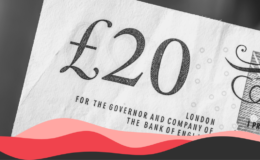This claim is inaccurate. Since 2007, economic output in the Derry and Strabane area has grown by 15% whether measured by Gross Value Added (GVA) or Gross Domestic Product (GDP).

On 9 July 2021, the Derry Journal published an article about a report, “Comparison of the economic growth of Derry and Belfast since the Good Friday Agreement (1998)”, written in 2018 by Cormac Duffy for Derry University Group (DUG) campaign group. The report used Gross Value Added (GVA) data to compare economic performance across the local authorities of Belfast, Derry City and Stranbane, and Lincoln (England). Among the report’s key findings is the claim: “Derry economy has contracted 21% since the restoration of Stormont in 2007.”
What is GVA?
Gross Value Added (GVA) is a metric of economic output, measuring the total value of goods and services produced in an area in basic prices, with the costs of any goods used to produce them removed to avoid double-accounting.
The Office for National Statistics note that “GVA per head is a useful way of comparing regions of different sizes”, adding that “it is not, however, a measure of regional productivity”. Academics and the ONS also note that comparing changes in GVA over time is “complicated by needing to deflate current prices appropriately”.
In practice GVA is very similar to Gross Domestic Product (GDP), the most widely used measure of economic growth. The difference between the measures is that GDP accounts for the value of these goods and services at their end market value, or in other words, when they are finally consumed. Therefore, GDP accounts for the effects of taxes and subsidies on any good or service in the final price.
The DUG report opts for the use of GVA as its chosen measurement of economic growth. However, given how frequently GDP is employed as a measure of growth, this fact check includes analysis of GDP for context.
The report uses ONS data published in 2017, which the ONS confirmed with FactCheckNI has now been replaced with a more comprehensive means of expressing GVA data. When first published, this GVA data was experimental in its approach, specifically in how it broke down GVA data from a regional (NI-wide) to a subregional (Derry & Strabane area) level. Since then, the approach for measuring GVA has changed significantly, with a more rounded and balanced GVA measure now in use. This more reliable GVA data is available up to 2019; however, the U4D omits to analyse data more recent than 2015.
Does the GVA data support the claim?
The central claim of the report that the Derry and Strabane area economy has contracted by 21% since 2007 appears to be inaccurate on a number of fronts:
- between 2007 and 2015, where the DUG assessment stops, GVA (adjusted for inflation to 2018 prices) grew by less than 1%, from £2.52bn to £2.55bn; and
- since the restoration of the Northern Ireland Assembly in 2007 to 2019, the latest year for which ONS data is available, the Derry and Strabane area economy grew by 15.4%, from £2.524bn to £2.912bn (shown in figure below).
Figure 1. Total Gross Value Added (GVA) in Derry and Strabane area (£m) (2007–2015, and 1998-2019)

What about the change in GDP?
The same growth trends can be seen in the inflation-adjusted (2018 prices) sub-regional GDP data. Between 2007 and 2015, the Derry and Strabane area GDP went from £2.96bn to £3.05bn, an increase of 3%.
But between 2007 and 2019 (the latest year for which council-level GDP data is available) the cumulative GDP growth is 14.8% (shown in figure below).
Figure 2. Total Gross Domestic Product (GDP) in Derry and Strabane area (£m) (2007–2015 and 2007-2019)

Summary
Looking at the most up-to-date figures for GVA, economic output in the Derry and Strabane area grew by 15% from 2007 to 2019. For GDP, a more widely used economic measurement, cumulative growth over the same time period was also up 15%.
The GVA measurement used in the original claim was an experimental approach that has since been updated by the ONS.




